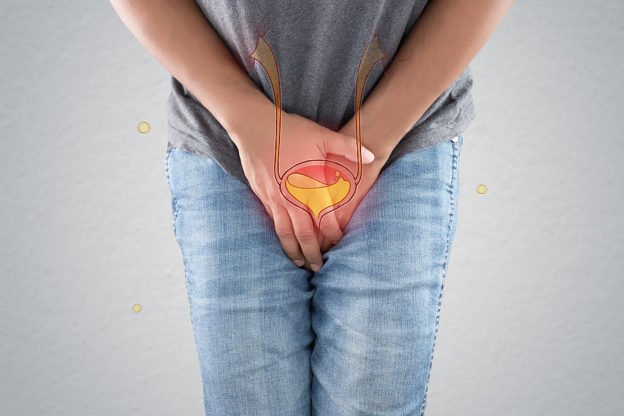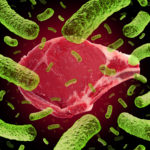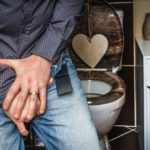By David Blyweiss, M.D., Advanced Natural Wellness
July 24, 2020
I’ve had a number of men come into my office over the years complaining about the constant urge to pee.
They usually suspect prostate problems. And, in some cases, they’re right.
But many other men are suffering from something much simpler… an overactive bladder.
Now, a lot of guys think of this as a “woman’s problem.” So, they’re surprised to learn that men suffer this condition at just about the same rate as women.
In fact, overactive bladder is a very real threat to men and women alike.
And sure, there are plenty of medications that would help ease the condition…
Open your arteries, improve blood flow for a new health miracle...
Did you know your circulatory system has over 60,000 miles of arteries, veins and other blood vessels, if stretched end to end?
But as you age, your blood vessels undergo changes, which may cause them to stiffen, thicken and get clogged.
GOOD NEWS! Doctors have now identified a “Miracle Molecule” inside your arteries that helps OPEN your arteries and IMPROVE blood flow.
It’s what Dr. Valentin Fuster calls it, "One of the most important discoveries in the history of cardiovascular medicine."To you, that means...
- Healthy blood pressure
- Sharper mind and memory
- Skyrocketing energy and muscular strength
- Increased pleasure and passion in the bedroom
- Improved circulation to every cell and organ in your body
Go here to discover a new natural way to significantly boost the levels of this miracle molecule in YOUR body NOW!
But remember, many of these meds only work on the symptoms. They don’t do anything to help treat or cure the underlying causes. And, as always, they come with some nasty side effects.
Let’s take a quick rundown of the side effects you could enjoy from these common drugs.
If you’re looking for dry mouth, constipation, and a rapid heartbeat, you might be taking a common first-line treatment in the form of antimuscarinic drugs. They work to relax your bladder muscles to reduce urgency and frequency.
Since these drugs are also antocholinergic – meaning they reduce acetylcholine in your brain – they can result in confusion, decreased mental facilities and worsening of dementia.
Or, if those side effects aren’t to your liking, you could opt for low blood pressure, dizziness, loss of energy and – the big winner – poor libido.
These side effects are caused by alpha-blockers which are used to relax the muscles in your bladder and around your urethra and prostate.
Now, obviously, I’m kidding around here…
No one wants these side effects. But that’s exactly what you’ll get if you take the conventional drugs. As I’ve said before, the stronger the drug the stronger the side effects.
The World's Quickest Solution for Ending Prostate and Urinary Misery
This has recently been revealed to be one of the only real breakthroughs in prostate health.
The seeds of a strange fruit (sometimes called "Chinese Apples") hold powerful phytonutrients that are a revolution in prostate health.
In fact, UCLA and Veterans Administration research have now proved this to be true.
Not only that, but it may be the worlds quickest solution for ending prostate misery.
Simply stated, these phytonutrients represent a huge step beyond beta sitosterol, saw palmetto, and other phytosterols alone.
Simply click HERE if you want to have fast prostate relief...restful, uninterrupted sleep...no more constant "urges to go"...enhanced virility...and optimal prostate support for life.
There are other medications that may be added or substituted, but none are free of side effects. They might relieve some symptoms – but probably won’t completely get rid of them. You could still experience urgency and/or leakage.
Plus, the minute you stop taking them you’re right back where you started – maybe even in worse condition.
This is a sad plight to be in. Shocking, too. That’s because performing just a few simple activities each day can treat your overactive bladder just as well – or even better – without any side effects whatsoever!
My First Line of Defense for Overactive Bladder in Men
Before you result to one of the drugs described above, I urge you to begin training your pelvic floor muscles. Also start working on voiding and suppression strategies.
This should ALWAYS be your first line of defense, and it’s so easy to do. You don’t even have to set aside any time for it.
Strengthen your pelvic floor with Kegel exercises. Women already know how to do this, but it’s a foreign concept to most of the male species. So your first job is to locate the right muscle.
The easiest way to find it is to stand or sit at the toilet and try to stop and start the flow of urine mid-stream as you eliminate. The muscles you flex are the pubococcygeal (PC) muscles.
Now that you’ve located the right muscle group, you can start exercising them at any time of the day – while lying in bed, sitting in a chair, standing or even walking.
Just clench the muscle tight for five to 10 seconds, then release. For best results, perform this exercise for five to 15 contractions, three to five times each day.
Pee once… then pee again. Sometimes overactive bladder is associated with incomplete bladder emptying. So once you feel like your bladder is empty, wait a couple of minutes, then give it another try. Do this each and every time you urinate. You might discover you aren’t completely voiding on each visit to the bathroom.
Train your bladder to “hold it” longer. Your bladder isn’t really full when overactive bladder sends you hightailing it to the men’s room. It’s just muscle contractions that make you think you are. So the idea here is to increase your bladder’s capacity while controlling the urge to go – one bathroom trip at a time.
Start slowly. When you have to pee, hold it for an extra few minutes before giving into the urge. Over time, add a couple more minutes here and there. Try and work your way up to at least an hour, or even more, between trips to the restroom.
Watch out for bladder irritants. Coffee, alcohol, artificial sweeteners, carbonated beverages and spicy foods all contribute to symptoms of overactive bladder. In some cases, you may have to have a food sensitivity test (not a food allergy test). Other than the above, the most common food sensitivities are gluten, dairy, corn, soy and peanuts. So keep these to a minimum in your every day diet.
Stay hydrated, but not over-hydrated. Six to eight glasses of water a day is adequate hydration for the average person. Get your fill early in the day, then reduce intake about two to three hours prior to bedtime to avoid overnight bathroom runs.
By the way… these same strategies work for women, too!
SOURCES:
Reynolds WS, et al. The Burden of Overactive Bladder on US Public Health. Curr Bladder Dysfunct Rep. 2016 Mar; 11(1): 8–13.
Burgio KL, et al. Effectiveness of Combined Behavioral and Drug Therapy for Overactive Bladder Symptoms in Men: A Randomized Clinical Trial. JAMA Intern Med. Published online January 13, 2020.
Willis-Gray MG, et al. Evaluation and management of overactive bladder: strategies for optimizing care. Res Rep Urol. 2016; 8: 113–122.







